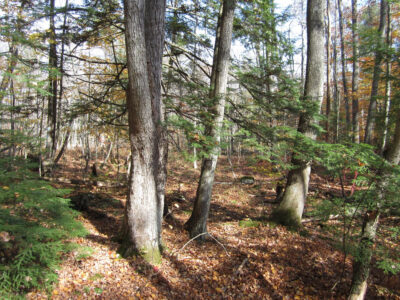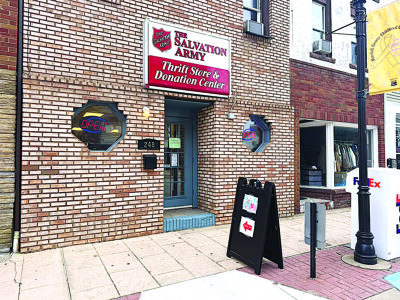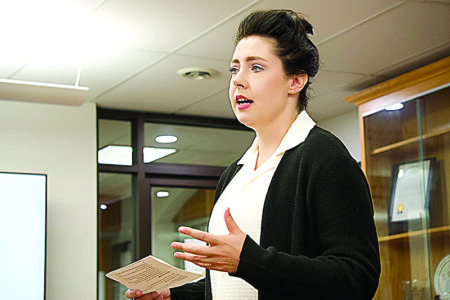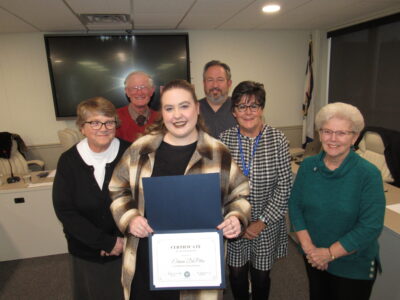Groups Discuss Economic Benefits of Reforestation

Reimagine Appalachia helps communities reforest former coal mine sites and restore the natural landscape. Last week, representatives from several organizations discussed how reforestation can improve local economies. (Photo Provided)
Reimagine Appalachia hosted a virtual meeting last week to discuss the Appalachian Regional Reforestation Initiative under the U.S. Department of the Interior’s Office of Surface Mining Reclamation and Enforcement.
The meeting focused on revitalizing former coal mine sites and how restoring the natural landscape can create jobs and economic opportunities while helping out the natural environment. It was sponsored by Appalachian Voices, Reimagine Appalachia, the National Wildlife Federation and the Appalachian Citizens’ Law Center.
The event featured speeches from people with firsthand experience in reforestation work.
Brendan Muckian-Bates, a policy advocate with the Appalachian Citizens’ Law Center, said that the Biden administration is supporting communities that are reforesting former coal sites.
He said that more recent federal initiatives are providing more funding for projects that promote “environmental justice and tackle climate change.”
“President (Joe) Biden has announced the American Climate Corps in September as part of a growing push to help younger Americans begin their careers in climate and clean energy,” he said. “By working across multiple federal agencies including the Department of Labor, the Department of Interior, the USDA, the National Oceanic and Atmospheric Administration, the Department of Energy and Americorps, the American Climate Corps will encompass a labor and energy focused career training program.”
Cliff Drouet, ARRI forester at the Office of Surface Mining Reclamation and Enforcement, said that reforesting former coal mines creates economic opportunities for communities affected by the decline of the coal industry.
He said that for many projects, the office uses local bulldozer operators to break up the compacted soil at the sites.
“It’s farming on steroids,” he said.
Drouet said that the office uses local tree-planting crews and local or state nurseries to provide trees and plants native to the area.
He said that for many projects, local students volunteer to hand-plant the trees. During the projects, the workers typically plant about 700 trees per acre meaning that they are spaced about eight feet apart.
Gary Conley, forestry director at Rural Action, an organization that focuses on providing environmental justice in Appalachia, discussed reforesting projects that he has worked on including the East Fork Duck Creek Watershed in Noble County. He said that he studied reforestation projects on many other sites to help him make informed decisions on how to tackle the project.
Sam Felton, mayor of Marlinton, West Virginia, discussed reforestation efforts in his small town.
He spoke about his role as a local elected official and the impact of the outdoor economy on a small rural town.
Felton discussed the town’s history and how the decline of the forestry industry was slowing down the economy. He said that he wanted to use Marlinton’s natural, outdoor resources to attract tourists to boost the economy.
“There is a correlation between healthy people and healthy outdoors,” he said.
Felton said that he believed that mountain biking could become more popular than skiing in the next few years, which would help stabilize the local economy and create more year-round jobs.
He said 16 new businesses have opened in town since the reforesting project was completed about two years ago.
Felton also said that he wanted to ensure that the reforesting project was done properly to make sure that the trees stay healthy.
“Trees are like people. They do have a life cycle, and if they are not forested properly, this will be the end of those trees,” he said.
Joshua Nease, executive director of Mon Forest Towns, an organization that supports towns near and within the Monongahela National Forest in West Virginia, said that he has worked with several towns to enhance their outdoor recreation.
He said that each town has its own needs and challenges such as community facilities, infrastructure, recreation, business and entrepreneurial development, workforce development and training, tourism, hospitality, amenities, branding and town planning.
He said that the organization works to secure grants provided by the USDA to help towns of all sizes get the funding they need to improve their natural resources.
According to a press release from Reimagine Appalachia, “this successful program has worked to reforest and revegetate former mine sites since 2004. With over 10,000 acres of reforested mine lands and a science-based approach to reforestation that includes partners from state and federal agencies, nonprofits and academic institutions, ARRI has a proven track record of sustainable growth across the region.”
For more information about AARI, visit the Office of Surface Mining Reclamation and Enforcement’s website at osmre.gov.



